The costs and benefits of a sustainable production chain: the Bottaro outlook
Investing in processes and materials that protect the world in which we live is a cornerstone of the company , which is aware that strict control of waste in all operational phases clearly has a higher economic cost in the short-term. Evaluating the long-term benefits, however, radically changes the business outlook.
In this article we will discuss:
- The Bottaro green production chain
- Wire drawing
- Heat treatments
- Better performances mean greater savings
- The finished product: the green wire par excellence
- The Novate Milanese plant: a virtuous example
- Digital transition in a sustainable perspective
- Packaging based on the recyclability of materials
- Why spending more sometimes is more advantageous
The Bottaro green production chain
Bottaro is determined to ensure that during all phases of its iron wire production, the utmost attention is paid to the concepts of eco-sustainability, circular economy and waste reduction which translates into constant control over every production process in its production chain, from the moment of drawing the raw material to the packaging and transport of the final product.
Let’s see how this green philosophy materialises in the main steps of the production chain.
Wire drawing
Bottaro wire is created at the Delebio (SO) plant. Here steel drawing takes place, when the material is stretched and passed through calibrated holes until it obtains the desired shape and cross-section. This process requires that the wire be lubricated.
Already at this stage, the results of studies and research conducted by Bottaro in the sphere of sustainability are implemented. The green lubricant used in this situation, in fact, has precise qualities:
- less is used compared to other products of the same kind
- it produces slag that is less polluting and, most importantly, recyclable
The drawing process therefore inevitably produces manufacturing waste: oil residues and steel fragments that are, however, separated and repurposed by the company in a circular economy perspective. A possible use? Steel fragments can be salvaged for producing permeable asphalt or used in the household appliance industry.
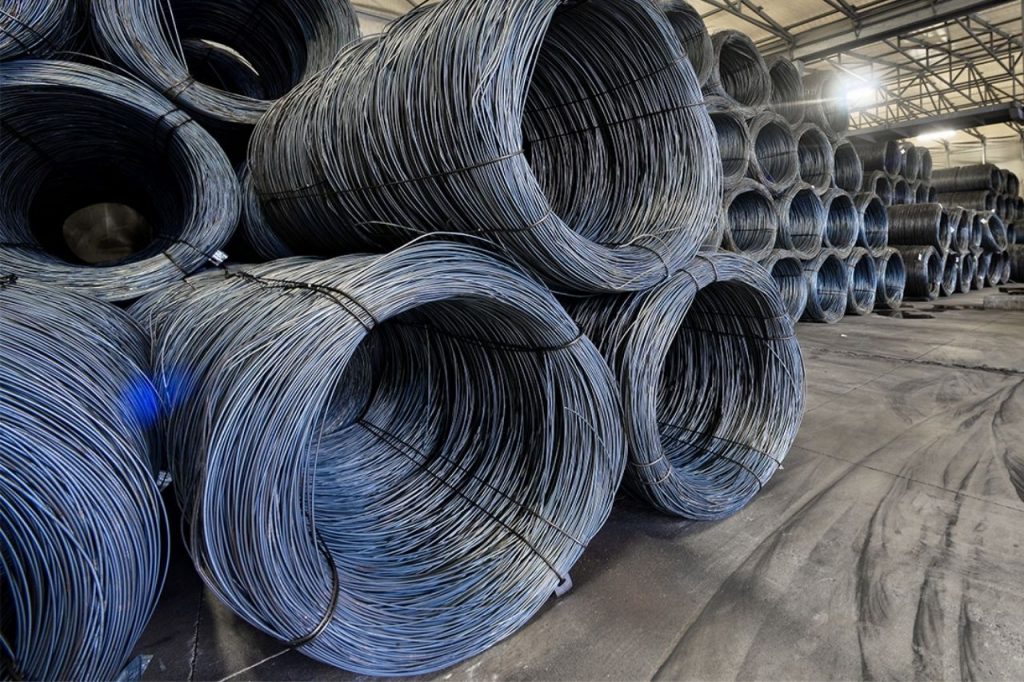
Heat treatments
In the process immediately following drawing, the material undergoes heat treatments. The wire then passes through furnaces and in some cases is also exposed to nitrogen, both during heating and cooling.
Bottaro has developed techniques for this phase that reduce exposure time in the furnaces as well as to nitrogen. The advantage in terms of energy is undeniable, as a lower consumption of electricity is registered. Given that less nitrogen can be used, advantages regarding a reduction in waste of this material are also registered. These are solutions that are then reflected in the nitrogen transport phase, as overland shipping is reduced, generating overall a lower emission of CO2 into the environment.
Better performances mean greater savings
The company also optimises electricity consumption in other ways: by equipping its electric motors with inverters that reduce consumption and guarantee greater savings in the long term, and by using LED lights in its plants. Both demonstrate how choosing higher performing and more sustainable solutions has undoubtedly required the company to make greater investments.
This theme will reappear in the near future, when Bottaro will replace the forklifts currently used in Delebio with electric vehicles equipped with lithium batteries, which allow for quick recharging and long-lasting performance levels, thus eliminating, once more, CO2 emissions.
Precisely investments made in new machinery can bring virtuous benefits also in terms of improving workflows: improvements made on machines have allowed work shifts to be reduced from three to two with surprising results. An improved and increased productivity has resulted in an 8-hour reduction in work. Result: fewer working hours for the machines and less pollution generated (noise included).
What’s more, in the coming years the company will implement a photovoltaic system aimed at increasing solar energy production and improving the autonomy of the systems in Delebio.
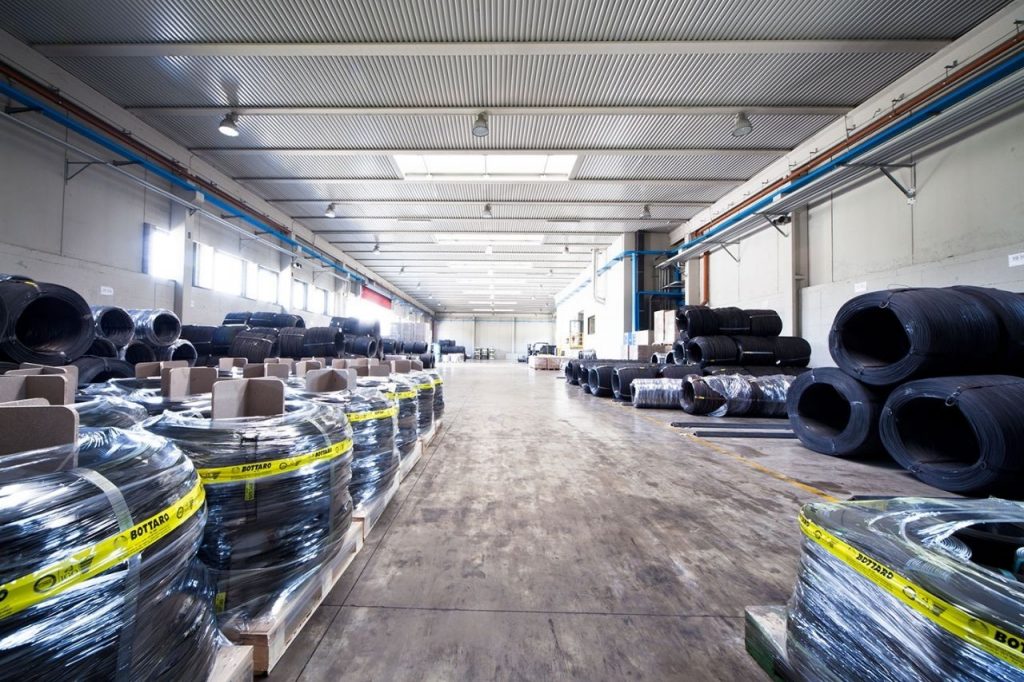
The finished product: BWG™+ and BWR™+, green wires par excellence
In the perspective of reducing waste, Bottaro, in collaboration with Italian universities and technological centres, has studied and created BWG™+ wire, the ultimate in eco-sustainability in the hot-dip galvanizing industry. Its thicker diameter allows for a reduction in the number of wires used in tying and reduces the surface area of the knot. This explains the lower level of zinc absorption when BWG™+ is used and its quality as the green iron wire par excellence, saving up to 40%. At the same time, the oil used to lubricate BWG™ has a higher performance level (better and less slippery wire, good grip, and better preservation of the wire preventing oxidation over time) and, consequently, enables it to be used in smaller quantities.
For further information on BWG™+ please refer to the blog article dedicated to this product appreciated and sponsored by all the major international industry associations.
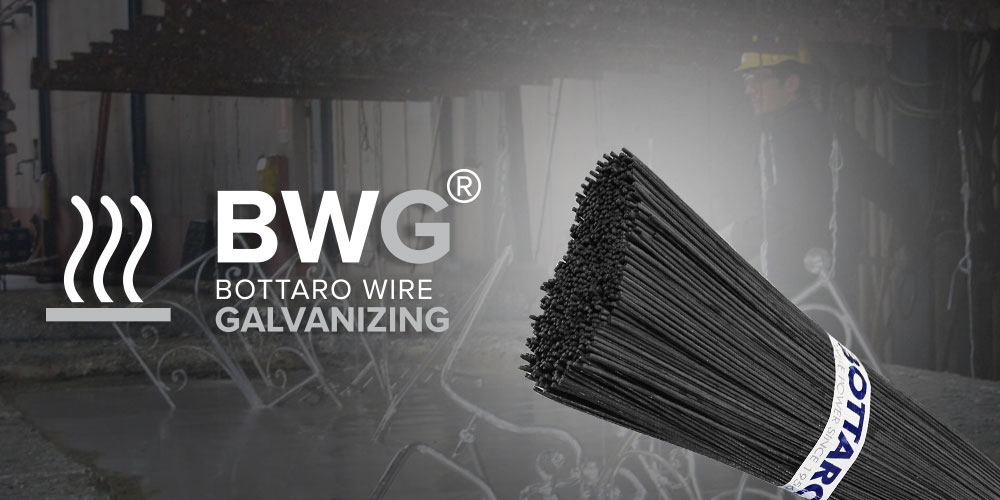
Likewise, BWR™+, a specific product for various types of baling machines (paper, SUW, hay, plastic, aluminium, cardboard), also fulfils all performance and sustainability requirements in an exemplary manner. Ideal for companies with high consumption levels, not surprisingly, we find Bottaro Wire Recycling’s green mission already in its name: its reduced diameter permits a superior metric development that allows almost twice as many bales with the same amount of material to be baled.
What do these characteristics implicate in terms of energy?
- When lubricated, this softer wire creates less friction on the mechanical components of the system subject to wear, consequently enabling lower electricity consumption.
- Being made of special highly resistant steel, BWR™+ will not break and does not cause annoying machine downtimes preventing a greater expenditure of time, money and energy for switching off and restarting machinery.
More information on BWR™+ can be found in the blog dedicated to the most resistant, highest performing and most secure iron wire on the market.
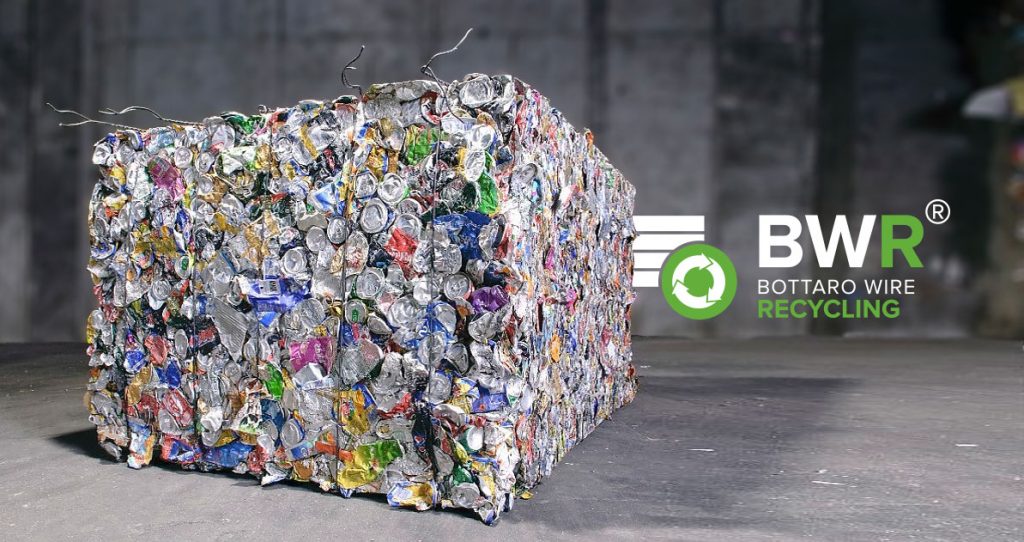
The Novate Milanese plant: a virtuous example
Once production is completed in Delebio, Bottaro’s sustainable production chain moves to Novate Milanese (MI), where packaging takes place and the different product packaging aspects are dealt with. The finished product is transported from here all over the world
Initiatives for protecting the environment are multiplying in the Novate plant and are wide-ranging, starting precisely with the plant concept. In fact, the entire structure is not only fully cabled with fiber technology, but is energetically self-sufficient owing to the use of photovoltaic panels. Not to mention that electric forklifts have been in use here since 1989.
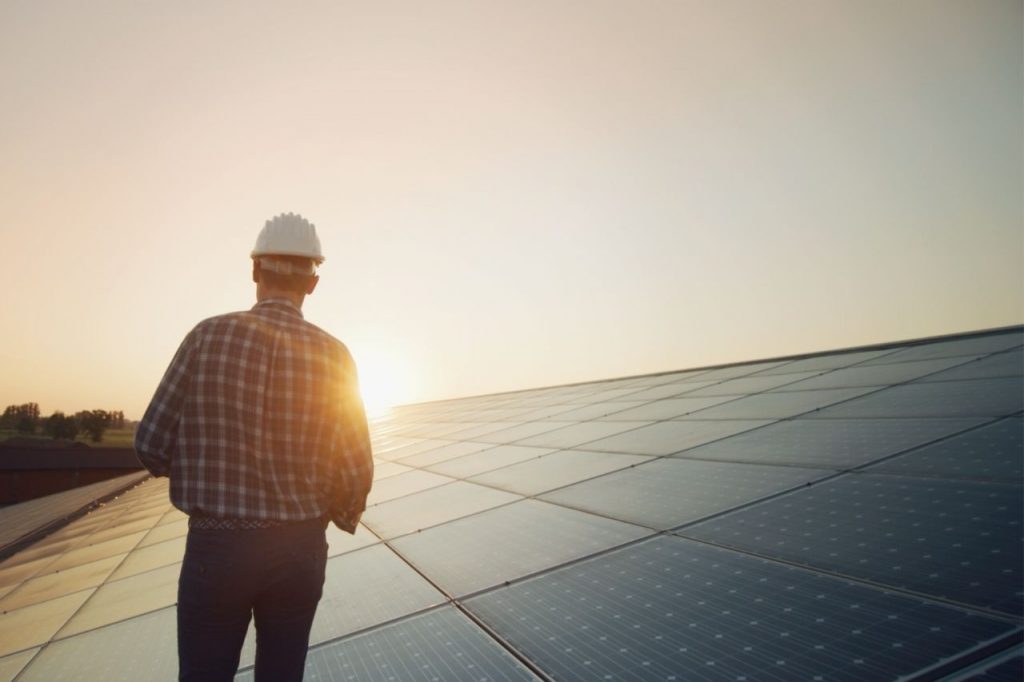
Digital transition in a sustainable perspective
But sustainability, for Bottaro, also can be achieved through the awareness of collaborators and employees and the company’s progressive digital transition: urging the staff to use less printed paper, for example, and providing everyone with the technological tools to implement these objectives.
Equipping employees with a second monitor, for example, was a simple and effective way to abolish paper consumption (except for shipping labels or labels used for product tracking in compliance with international STANDARDS ISO 9001-2015). On another front, optimising trips and transfers, promoting the use of digital, video calls, webinars and videos, has guaranteed lower fuel consumption for travel in the area.
Packaging based on the recyclability of materials
The final step of the production chain becomes fertile ground for Bottaro to implement specific recycling policies that take into consideration all the materials used for packaging the finished product. Let’s see what kind of contribution each material makes in terms of environmental sustainability.
- Plastic: the stretch wrap used to protect packaging is made of recycled and recyclable plastic. Having to find a solution that was just as ecological as it is highly performing in terms of product protection and, therefore, resistant during transport has certainly required the company to make a greater investment.
- Cardboard: the standard kind, used to create packaging, is made of recycled paper, while XSystem Cardboard, made of particle board for greater product protection, is nonetheless recycled and recyclable in turn.
- Wood: pallets used to transport products are made of wood and therefore absolutely recyclable. Plastic pallets, upon request, can also be used, which are equally salvageable.
- Ink: all writing on the packaging (logo and product specifications) is printed with biodegradable ink.
- Oil: the one used to lubricate some products (upon customer request) is biodegradable and is not harmful to the environment or people.
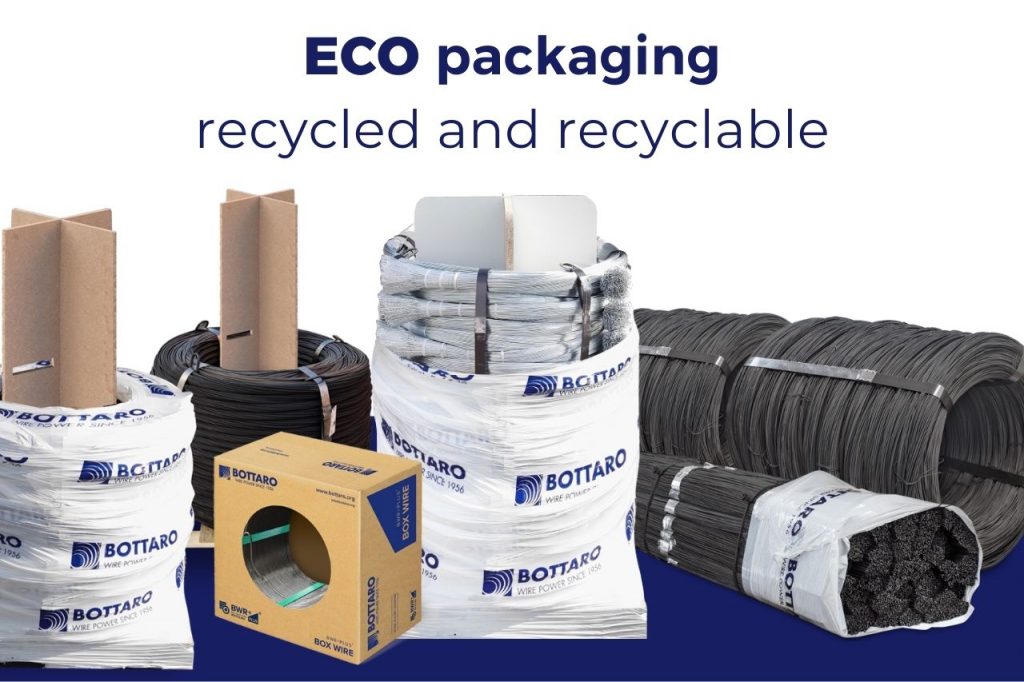
Why spending more sometimes is more advantageous
An all-encompassing sustainability policy such as the one implemented by Bottaro, while on the one hand benefits not only environmental protection and the well-being of society, as well as the quality of the final product, on the other is certainly not free of cost to the company.
In a word, being virtuous is expensive. Recycled and recyclable materials cost more, as does higher performing machinery. Studies for developing innovation call for important investments in research just as the company’s digitization processes imply investments in technological infrastructures and human resources to be dedicated to them.
All this inevitably has implications on the final price of the product. But it is precisely here, on the higher final price, that the true game of sustainability is actually played out, because at this point the issue takes on a larger scale and no longer depends only on Bottaro, but on other businessmen and women who appreciate and understand the green philosophy and the investments in research and technology the company must deal with and are willing to acknowledge the company for this effort.
Bottaro is a company which, despite this strategy but also because of it, is always able to offer a first-rate product that is acclaimed for its outstanding quality by the international market.
This is why the vertical production chain controlled by Bottaro is spreading all over the world to help people understand how business can be combined with the demands of sustainability effectively, obtaining benefits for the company, perhaps not economic in the short term, but certainly in the long run-in terms of image and new virtuous collaborations with partners who, exactly like Bottaro, have chosen to make the world a better place with their work.
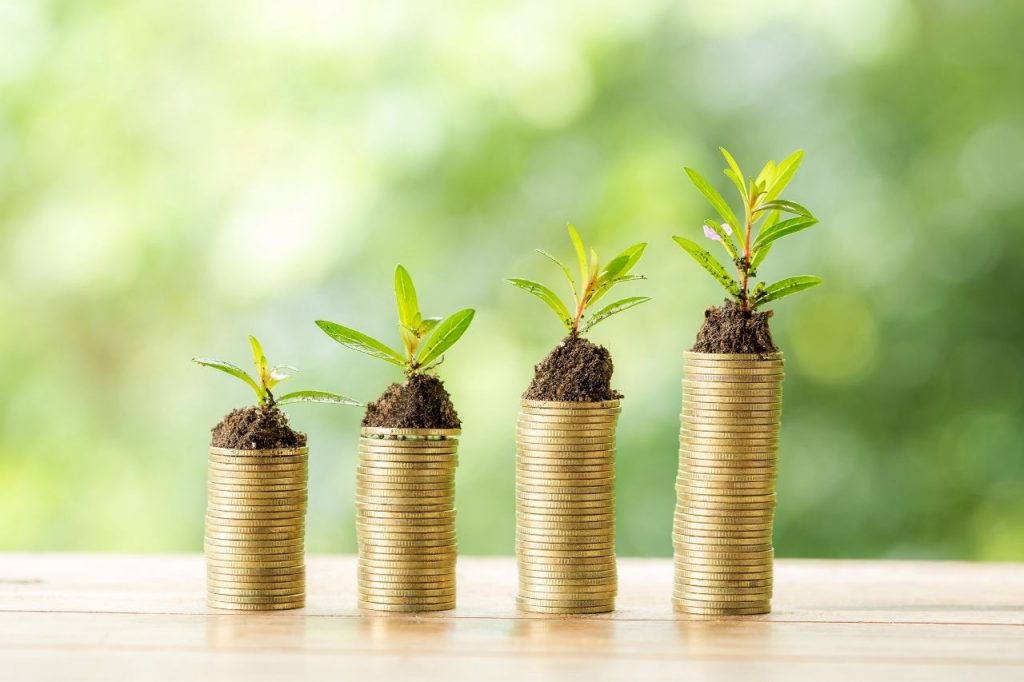
© Copyright Bottaro Mario S.r.l. - All rights reserved

